How to get work experience without having work experience: tearing the vicious circle of a novice designer
Richard Young can safely say that he made himself : in less than a year he went from being an intern to an ergonomic consultant at an agricultural company to a full-time designer at Sony. Today we offer you another translation of Richard's post with tips for aspiring designers.

“I receive many letters asking how to start a designer’s career:“ I received an education in the field of communication of minerals and medieval poetry. Do I have any chance to become a designer? What is the best place to start? ”
"Start" is best of all: rush headlong into your first project. Forget about trainings, books, courses, tutorials, online classes - all this only paralyzes you with an excess of information. Many people kill for months looking for "the best design resource."

Contrary to all
')
Your dream project starts with an idea. Here are the most common types of ideas on the version of the free course design products from Udacity:
People often forget that a problem can be solved in different ways. Take an existing product and try to improve the experience for a group of users or a private scenario. Or, as it is now fashionable to say, some markets are on the verge of destabilization .
Make a list of ideas and test them on friends. See what interests them to understand which options are viable. Do not be afraid that an idea is “stolen from you” - ideas alone do not cost anything , no need to demand solemn oaths from friends. Nobody will take away your brilliant idea to open a service for the delivery of condoms and lubricants.
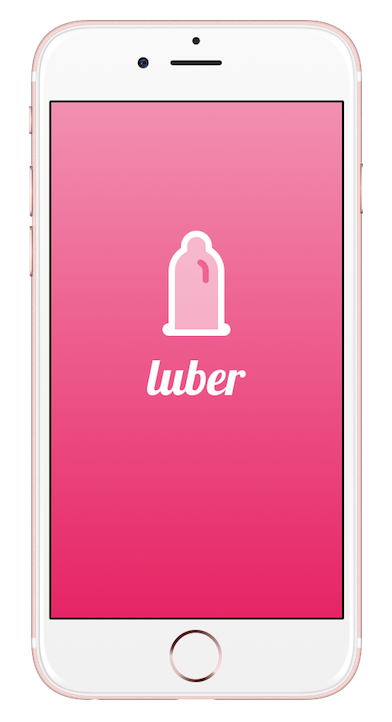
This is a real idea, and the man was seriously afraid that I would steal it.
The best ideas are not ambitious "million-dollar apps." The best ideas come from defining personal pain points and working on them. Beginners in design often mistakenly believe that they understand their users. If you are not trying to eliminate some kind of personal pain point, it is not. Believe me: resolving a problem that makes you feel strong is the best source of motivation. Most likely, only these feelings will help you to survive in difficult periods.
Here are a few short notes for those who plan to turn the project “for themselves” into a full-fledged startup in the future:
There is a whole bunch of tools for designers, and every week there are more and more new. Important note: do not dwell on one thing, be flexible - the tools constantly replace each other. Below is a list of popular tools that seem useful to me (in order of personal preference):
Design :
Prototyping :
Wireframing :
Organization :
Specifications :
Step Three: Igo Necessity
The best way to learn something is to take and do.
If you plan to learn design (and indeed, anything) according to the following scheme:
then please stop.
Whatever topic is up to date in the course, most likely it has nothing to do with your current goals. The further you progress in the work on your project, the more concepts and tools you will want to learn - just out of necessity. Personally, I once sat for four hours over boring documentation, and all in order to fix a single icon.
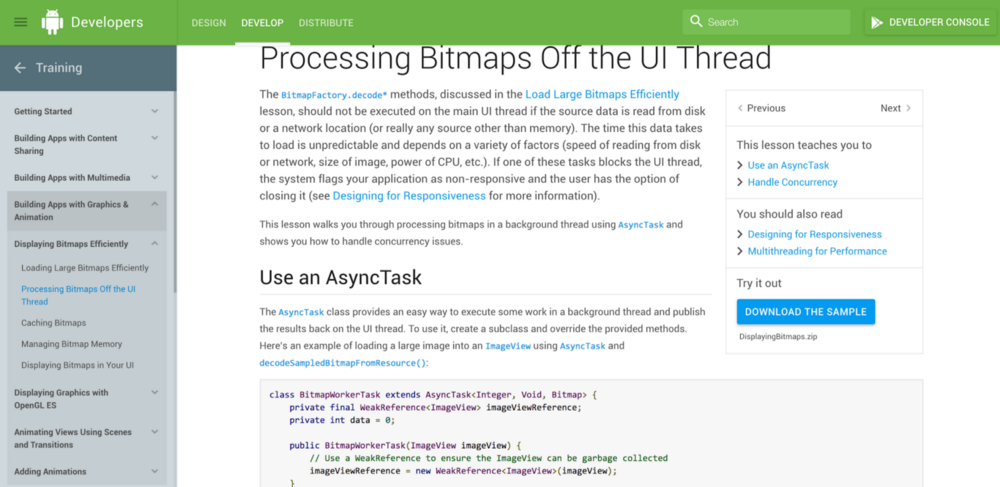
I would not read it in my life if there were no need
If you have reached a chapter or a topic that is not interesting to you or seems useless, skip it. You can always return to it, if later it turns out that you need it for some reason. Nothing is more exhausting than “learning” through force.
If all of this seems hard to you, then you are doing something wrong.
I did not begin to learn design from a list of the best books. I will say more: when I first tried to master the book " Design of familiar things ", she instantly put me to sleep. When you learn something new, you should have an internal impulse to immediately change everything radically in your project. This is a good feeling, this is the incentive that will drive you forward.
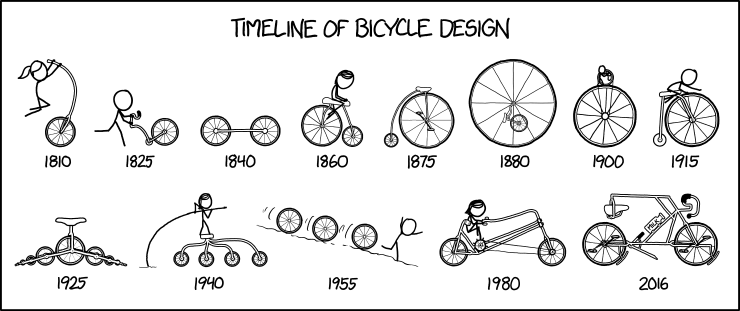
Each new iteration should reflect what you learned in your work on the previous ones.
There is no answer to the question: “What resources are best for designers?” Best of all are the resources that will help you refine the weak points in your design at this stage.
If you also burn your project, as I do, then surely tell about it to each developer who catches the eye. At some point, you will impress any of them to the extent that he joins the work on your project. If it still does not work, I can advise a useful community on Facebook, in which they exchange designs and code.
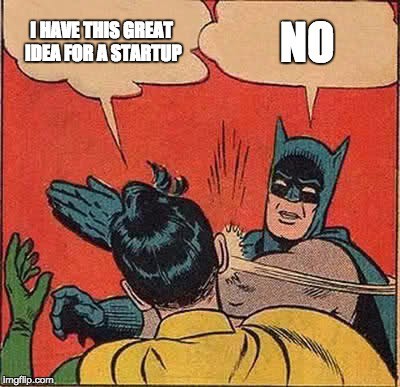
Do not despair
In the process of communicating with the developers will reveal the problems that you have never thought about. Novice designers, as a rule, do not notice all minor deviations from the ideal scheme of the user's path. These special cases are an important aspect of interactive design, but they are often forgotten. Improving the user's path , you will bring your design to a new level.
Avoid common errors, for example:
Take time to think carefully about every decision you make in your design work. Never perform a UI element in one way or another just because it looks cool. Learn popular UI patterns on ui-patterns and goodUI , so as not to repeat the mistakes of others.

By submitting your project to the development, you learn "teamwork". Thanks to the most patient development in the world.
Refine the project to the maximum, while you are still passionate about it. But do not push the water in a mortar if you find some critical flaw in the original idea. The goal of this project is not to become the second Bill Gates, but to master the basics. Do not be afraid to switch to another idea and start over - the second time everything will be much easier.
Do not be afraid to spend a few months on your project. Focus on those lessons that you learn from working on each iteration. If you manage to bring your product to the market - congratulations! Now you have "real experience." Describe in detail this “case” for your portfolio and do not forget to emphasize how much benefit you have learned from working with developers.

A beautiful Dribble account with hypothetical projects that never see the light will not help you find a job. Focus on the cases .
If at the moment you do not have enough confidence to apply for an internship - there are other ways to save up "real experience." Look somewhere near hackathons with a sight to recruit people to your team. Your goal should be to find developers with whom you interact well. After the hackathon try to offer them the continuation of the project (or start a new one).
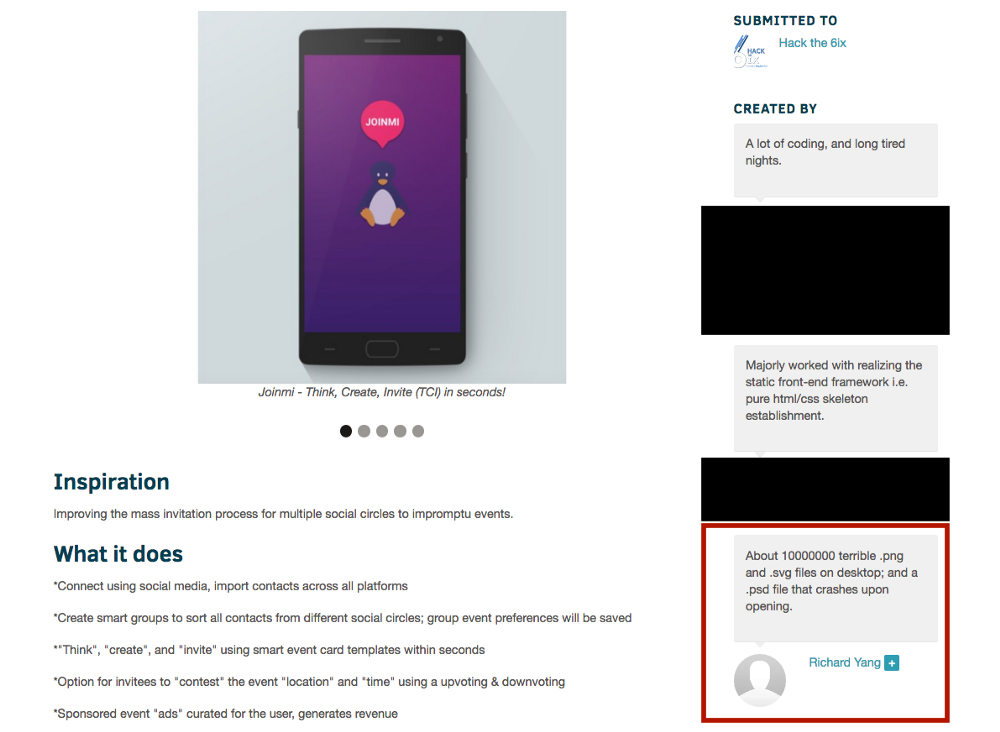
My invaluable contribution to the first hakaton. Do not worry, hackathon special experience is not required .
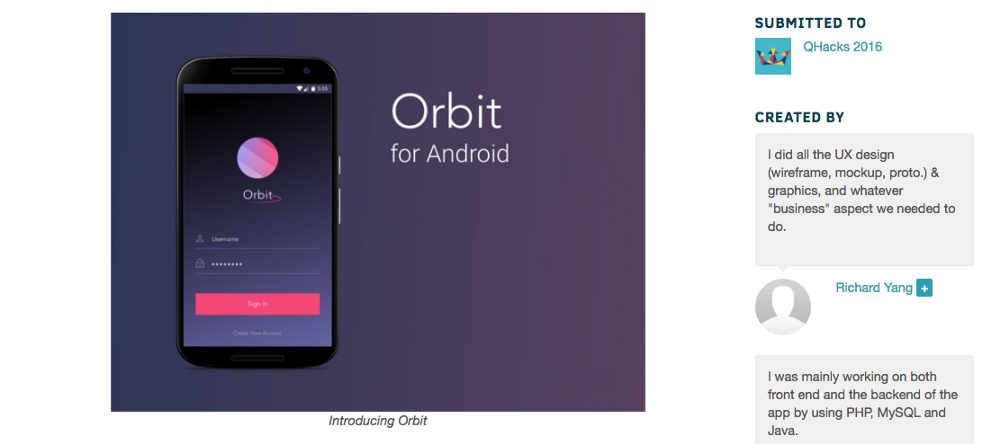
This project we even rolled out. He collected "from 1 to 5 installs." A few more millions - and we will overtake Facebook!
You can also contact startups that are just starting to develop, and try to get there. University start - up incubators are a great option to get started. Do not hesitate, startups, as a rule, need designers!
Offer them your services (albeit free of charge). Whatever job you have to do for them, it will be a more valuable experience than any personal project. If you are not "hired", try to sketch out proposals for design. Take a look at the product or website of the startup and point out the flaws that you could help fix.
What's next? Keep on working. Focus on case studies. Your works will not be in vain. "

“I receive many letters asking how to start a designer’s career:“ I received an education in the field of communication of minerals and medieval poetry. Do I have any chance to become a designer? What is the best place to start? ”
"Start" is best of all: rush headlong into your first project. Forget about trainings, books, courses, tutorials, online classes - all this only paralyzes you with an excess of information. Many people kill for months looking for "the best design resource."

Contrary to all
')
Step One: Come up with an idea
Your dream project starts with an idea. Here are the most common types of ideas on the version of the free course design products from Udacity:
- Simplify Example: Instagram has taken the “share photo” feature from Facebook and made it easier.
- Copy. Example: Alibaba implemented the idea of Amazon in a different market.
- Virtualization Example: Uber made the taxi booking process available online.
- Remix Example: Slack combines e-mail service and messaging function between individual users or within a closed group.
- The mission is (almost) impossible. This species in the first draft is best avoided.
People often forget that a problem can be solved in different ways. Take an existing product and try to improve the experience for a group of users or a private scenario. Or, as it is now fashionable to say, some markets are on the verge of destabilization .
Make a list of ideas and test them on friends. See what interests them to understand which options are viable. Do not be afraid that an idea is “stolen from you” - ideas alone do not cost anything , no need to demand solemn oaths from friends. Nobody will take away your brilliant idea to open a service for the delivery of condoms and lubricants.

This is a real idea, and the man was seriously afraid that I would steal it.
The best ideas are not ambitious "million-dollar apps." The best ideas come from defining personal pain points and working on them. Beginners in design often mistakenly believe that they understand their users. If you are not trying to eliminate some kind of personal pain point, it is not. Believe me: resolving a problem that makes you feel strong is the best source of motivation. Most likely, only these feelings will help you to survive in difficult periods.
Here are a few short notes for those who plan to turn the project “for themselves” into a full-fledged startup in the future:
- Avoid apps that pose a “ critical mass ” problem. In other words, those that can function only with a large number of users - social networks, applications with user content.
- Make sure the market is big enough that you are solving a problem that many people are facing.
- Focus on pain points that are truly painful , and not minor inconvenience.
Step Two: Tools
There is a whole bunch of tools for designers, and every week there are more and more new. Important note: do not dwell on one thing, be flexible - the tools constantly replace each other. Below is a list of popular tools that seem useful to me (in order of personal preference):
Design :
- Sketch (highly recommended, unfortunately, only available on Mac)
- Adobe XD (the best alternative to Sketch for PC users)
- Webflow (one of the best tools for web design, will teach you HTML and CSS)
- Axure RP (rather complicated, but “all inclusive”)
- Figma (free and does not require installation!)
- Adobe Illustrator (better refrain for now)
- Adobe Photoshop (better refrain for now)
Prototyping :
- Invision (the most basic minimum - a good tool for beginners, a limited set of custom interactions)
- Flinto (great for any level)
- Webflow (create and launch a working website without a line of code - ideal for freelancers who work, for example, on landings)
- Principle (more for screen transitions and microinteractions)
- Framer.js (requires the ability to code at a basic level)
Wireframing :
- Paper and pen (this is not an app)
- Balsamiq
- Sketch
Organization :
- Trello
- Invision (commenting function at height + there is an opportunity to attach links to Skecth files)
Specifications :
Step Three: Igo Necessity
The best way to learn something is to take and do.
If you plan to learn design (and indeed, anything) according to the following scheme:
- Complete course A
- Take course B
- Read Book B
- Take part in boot camp D
- Read Book E
- Read Book Z
- ???
- Magically go to the professional level
then please stop.
Whatever topic is up to date in the course, most likely it has nothing to do with your current goals. The further you progress in the work on your project, the more concepts and tools you will want to learn - just out of necessity. Personally, I once sat for four hours over boring documentation, and all in order to fix a single icon.

I would not read it in my life if there were no need
If you have reached a chapter or a topic that is not interesting to you or seems useless, skip it. You can always return to it, if later it turns out that you need it for some reason. Nothing is more exhausting than “learning” through force.
If all of this seems hard to you, then you are doing something wrong.
I did not begin to learn design from a list of the best books. I will say more: when I first tried to master the book " Design of familiar things ", she instantly put me to sleep. When you learn something new, you should have an internal impulse to immediately change everything radically in your project. This is a good feeling, this is the incentive that will drive you forward.

Each new iteration should reflect what you learned in your work on the previous ones.
There is no answer to the question: “What resources are best for designers?” Best of all are the resources that will help you refine the weak points in your design at this stage.
Step Four: Development
If you also burn your project, as I do, then surely tell about it to each developer who catches the eye. At some point, you will impress any of them to the extent that he joins the work on your project. If it still does not work, I can advise a useful community on Facebook, in which they exchange designs and code.

Do not despair
In the process of communicating with the developers will reveal the problems that you have never thought about. Novice designers, as a rule, do not notice all minor deviations from the ideal scheme of the user's path. These special cases are an important aspect of interactive design, but they are often forgotten. Improving the user's path , you will bring your design to a new level.
Avoid common errors, for example:
- Button states
- Messages about the invalidity of the entered data
- Permission on various devices
Take time to think carefully about every decision you make in your design work. Never perform a UI element in one way or another just because it looks cool. Learn popular UI patterns on ui-patterns and goodUI , so as not to repeat the mistakes of others.

By submitting your project to the development, you learn "teamwork". Thanks to the most patient development in the world.
Refine the project to the maximum, while you are still passionate about it. But do not push the water in a mortar if you find some critical flaw in the original idea. The goal of this project is not to become the second Bill Gates, but to master the basics. Do not be afraid to switch to another idea and start over - the second time everything will be much easier.
Step Five: And what's next?
Do not be afraid to spend a few months on your project. Focus on those lessons that you learn from working on each iteration. If you manage to bring your product to the market - congratulations! Now you have "real experience." Describe in detail this “case” for your portfolio and do not forget to emphasize how much benefit you have learned from working with developers.

A beautiful Dribble account with hypothetical projects that never see the light will not help you find a job. Focus on the cases .
If at the moment you do not have enough confidence to apply for an internship - there are other ways to save up "real experience." Look somewhere near hackathons with a sight to recruit people to your team. Your goal should be to find developers with whom you interact well. After the hackathon try to offer them the continuation of the project (or start a new one).

My invaluable contribution to the first hakaton. Do not worry, hackathon special experience is not required .

This project we even rolled out. He collected "from 1 to 5 installs." A few more millions - and we will overtake Facebook!
You can also contact startups that are just starting to develop, and try to get there. University start - up incubators are a great option to get started. Do not hesitate, startups, as a rule, need designers!
Offer them your services (albeit free of charge). Whatever job you have to do for them, it will be a more valuable experience than any personal project. If you are not "hired", try to sketch out proposals for design. Take a look at the product or website of the startup and point out the flaws that you could help fix.
What's next? Keep on working. Focus on case studies. Your works will not be in vain. "
Source: https://habr.com/ru/post/321940/
All Articles